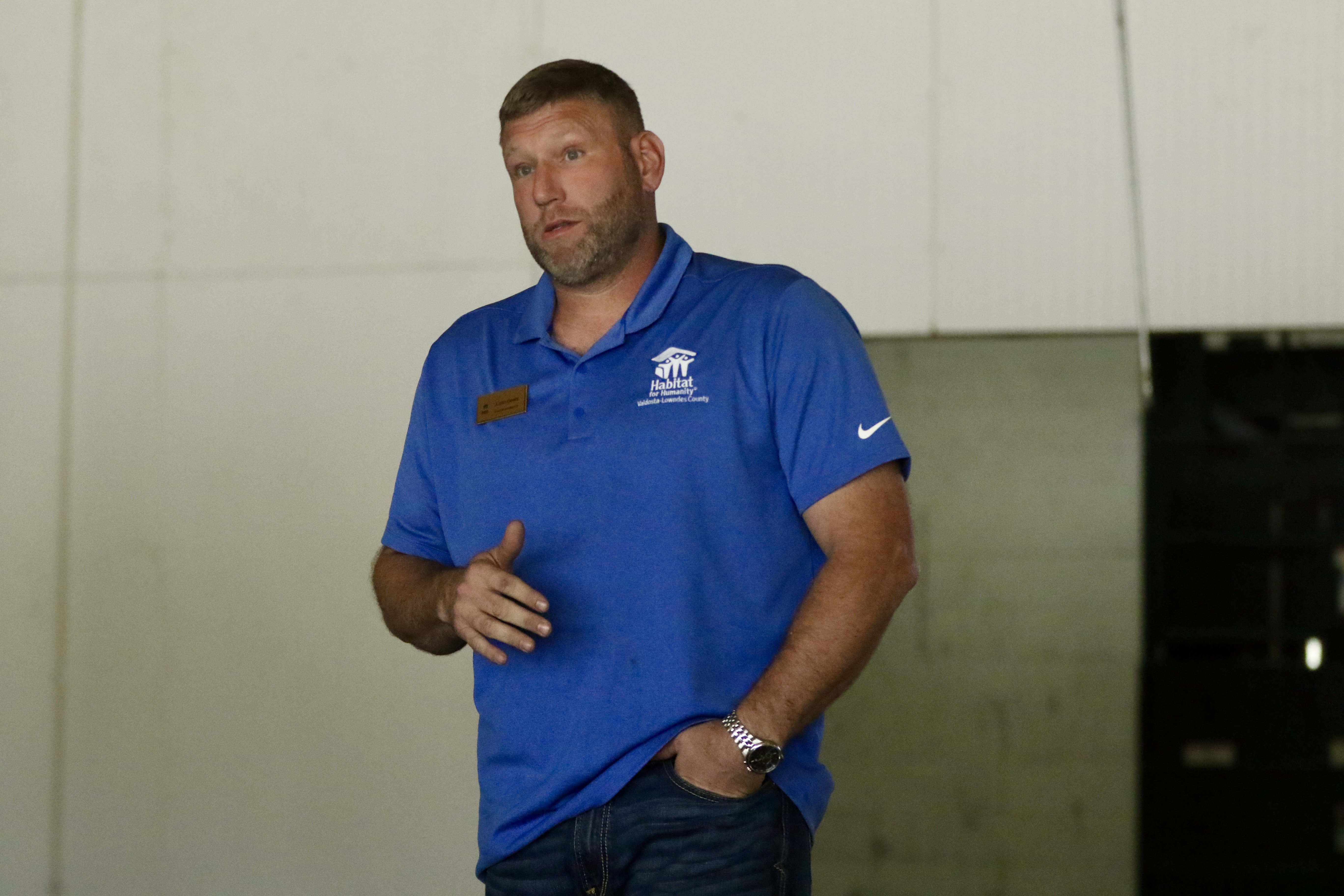City responses to Times’ questions
Published 11:00 am Sunday, April 7, 2013

- (Newscom TagID: ndxphotos003239) [Photo via Newscom]
Editor’s Note:
It has come to the attention of the Times that the Chamber of Commerce has called a special meeting on Tuesday to address what COC Pres. Myrna Ballard terms as “damage to our community’s reputation” due to the stories that have appeared in the newspaper. The invitation for the 9 a.m. meeting at the Chamber office was extended to only a select group of Chamber members, no media, and states that Mayor John Gayle and City Manager Larry Hanson will explain the city’s financial status. The Times takes very seriously the implication that the newspaper has written anything that is “inaccurate,” as stated by the Chamber. As such, the Times has chosen to show the public the information provided to the newspaper in response to questions posed to the City, with no editing, to allow citizens the opportunity to see for themselves if what the Times has written is an “inaccurate” portrayal of the city’s financial status.
Timeline
March 15, 2013: Open Records Request filed with the Valdosta City Clerk requesting financial records regarding the water/sewer enterprise fund.
March 20, 2013: Clerk responds by requesting that the editor and reporter meet with the deputy city manager to obtain the requested items. The meeting
resulted more questions than answers. Before writing a
story about the information, the Times requested clarification.
March 25, 2013: Email from Times’ reporter to Deputy City Manager, City Manager and Mayor.
“Thanks for your patience on this. I know I’ve been having a difficult time trying to wrap my head around the City’s plan to get these projects paid for. That said, I still have a few pressing curiosities about the information we’ve been discussing, and some questions about GEFA loan history. For easier reference, I’ve italicized the questions I still need answers for.
Larry (Hanson) mentioned this SPLOST VII Water and Sewer Estimated Proceeds and Disbursements chart you presented to the City (the chart that I brought to the City Council meeting) simply showed “a way to free up” $10 million for other projects. But that still doesn’t explain where that “freed up” money is coming from. If, on that chart, you are paying $25.6 million for current debt, $20 million for the Withlacoochee treatment plant relo, and $11.03 million out of the $55.4 million SPLOST budgeted for wastewater, that leaves the ledger $1.23 million in the red. So, assuming we’re spending ALL $32 million from the new GEFA loan on the new force main project, what fund will pay for that additional $1.23 million, and from which fund is that other $30.76 million coming? How will the City “free up” money?
Larry said “We’re going to spend more than $55.4 million” in wastewater improvements. I’m assuming that GEFA loans will also be spent on those projects to make up for the difference—am I correct? In either case, why would you put both the GEFA loan and the SPLOST revenues in the same coffer to pay for both debt retirement AND construction, when GEFA is borrowed for construction only?
Mark, can you please send me a list of expenditures for those eight GEFA loans? What specifically have each of those loans purchased? Have they all been wastewater projects?
I notice the expiration dates on the loans taken out May 1990 and November 1993 has passed—the first in 2009, the second in 2011. Have these been paid off, or are they still active?
In addition, the City’s March 22 press release explicitly states the GEFA loan will be used for both construction and debt retirement. Larry said Thursday the GEFA would be entirely used for the force main project, and not for debt retirement. Which is correct?
Thanks again for your time and continued patience in helping me understand this issue. I’m sure we’ll get everything figured out soon.”
March 25, 2013: City response: “No problem at all. I believe the most effective way to help you is to schedule another meeting and go step by step through the schedules you still have questions about. Just let me know a good time for you to meet.”
March 27, 2013: City deputy manager, editor and reporter meet again, with a brief visit by the Mayor.
March 28, 2013: City deputy manager sends Times the GEFA spreadsheet with was printed in its entirety Monday, April 1, 2013.
March 28, 2013: In response to the spreadsheet, the editor requested clarification from the deputy city manager, city manager and mayor.
“Mark, quick questions — this is only 7 (loans), and we thought you said there were 8? Also, we were told that stimulus funds paid for all of the Mud Creek (wastewater plant) work, so why would there be a need to do four separate GEFA loans for the project? And thank you again for your assistance in helping us to understand all of this information.”
March 28, 2013: Reply from the City: “Since we have been having these conversations, loan 92-003-SW has been paid off. The Mud Creek project contained $10,000,000 of stimulus funding of which $4,000,000 was forgiven and the residual is being repaid at a lower interest. The loans are broken down in phases of the project. As we discussed earlier, for the City it is one source of funding for the project; however, GEFA breaks the loan into phases, including the stimulus funding as denoted as ARRA PH1 on the previous attachment I sent.”
Second reply from the City is a copy of the press release from 2012 about the Mud Creek plant, which states:
“The Mud Creek WPCP is a state-of-the-art facility that was constructed with the major participation of local Valdosta contractors. The project was entirely funded through low-interest means including the Clean Water State Revolving Fund (CWSRF) and American Recovery and Reinvestment Act (ARRA). In fact, the city received $4 million as a forgivable loan from the ARRA. The plant will provide long-term service for the city’s growth,” according to Mayor John Gayle.
The city received ARRA funding in the amount of $10 million for the project, with $4 million forgiven because the project was considered “green.” The remaining $6 million in ARRA resources was funded in the form of a low interest loan.”
March 31, 2013: Story in Times, “Options limited for wastewater fixes: City of Valdosta facing a consent order from the EPD.”
April 1, 2013: Story in Times, “A city in debt: A look at Valdosta’s GEFA loans,” with the spreadsheet provided by the city. In the story, referencing the above email from the City of March 28, (”Since we have been having these conversations, loan 92-003-SW has been paid off”), “The city paid off the oldest loan in the two weeks the Times has been requesting information about the loans.”
April 1, 2013: Email from the City: “After reading today’s article, I believe there is still some confusion. Loan 92-003-SW was is in two parts – $1,000,000 that matured in 2009 and $250,000 that will mature in 2014. The $1,000,000 portion of the loan matured and was paid out February 1, 2009. My response to you Thursday should have been more clearly stated that we removed this portion of the loan from our spreadsheet because it was paid off and left the $250,000 portion. We still list it in the CAFR In the upper portion of the page because it is tied to the remaining $250,000 that will mature in 2014.
I did not realize you guys were thinking we had a loan in arrears, because that is not the case. If you have additional questions, please let me know.”
April 1, 2013: Response from the Times: “Unfortunately, no where in the CAFR does it break that loan into two parts, and on the list of outstanding GEFA loans you sent us last week, there is no reference to a $250,000 loan or a $1,250,000 loan. All we can do is use the numbers you provided.
In addition, Jason specifically asked you about the maturity dates on those two loans, stating that according to the CAFR, they are overdue, and the comment you made is that there really aren’t any penalties if you don’t pay them back by that date.
If we misunderstood, we are sorry, but again, those numbers and dates were taken straight from the CAFR and the spread sheet. If there is still $250,000 owed on 92-003-SW, why did you send the email saying it had been paid off, and why isn’t that amount in the spread sheet?”
April 1, 2013: City response: “I just wanted you to know, for future reference, that there are no loans in arrears with GEFA. I would be happy to provide you with the Feb. 1, 2009 payment documentation on that particular loan. The other loan in question has 2014 maturity date.”
April 2, 2013: Times story, “City explores sewer funding options: Officials explain the need for both GEFA loans, SPLOST.”
April 3, 2013: Emails from the Times to the City: “I want to ensure that we dispel the confusion around the GEFA loans in order to make sure the community is informed correctly. It would be a great help if you could please answer the following (questions listed below in city Q&A).
Thank you for your patience! You have been very gracious in assisting us as we are sincerely attempting to accurately portray the information.”
April 3, 2013: City response: “I will be back in the office tomorrow and would be happy to explain the CAFR tables once again. I really don’t believe we will accomplish much via emails.”
April 3, 2013: Times response: “Thank you for your reply. If you don’t mind, can you please first answer the questions in writing and then we can meet and go over the information? Our meetings have been very productive, but it really helps having the information in written form to help eliminate some of the confusion, having to go back and forth between the various charts.
Jason and I can be available at your convenience pretty much anytime on Thursday. Thank you!!”
April 3, 2013: City response: “I would still prefer the meeting first so that we can all be looking at the same chart, notes etc. Just let me know a good time for you.” Followed by, “I did get a little free time this morning, so I am trying to answer the questions for you, I will send to you in just a few minutes.”
April 3, 2013: City response, with Questions and Answers marked.
Times Q: “You stated in one email that 92-003-SW had been paid in full in the last two weeks, but in a second email you said it still had a $250,000 balance due in 2014. Can you please explain?”
City A: “My response was in reference to your question in regard to the actual number of loans.I was explaining that the spreadsheet I sent you with description of loans did not have the $1,000,000 because it had been paid off, and we had changed this since we had begun our discussions. This loan was not paid off in the last two weeks, but February 2009. It was listed as a previous loan.”
Times Q: “On page 67 of the CAFR for 2012 presented last month to the council, can you match the top chart to the bottom chart? The top chart simply has loan amounts but no numbers; the bottom chart has numbers but no way to correspond the two. Can you please provide one list that combines the information?
City A: “The top chart simply list all loans that the City has utilized with GEFA, both active and retired. The bottom chart shows the active loans that the City is still making payments on. If you go to page 68 and 69 more details follow in regard to the active loans. This is why there are 10 listed in the top chart and 8 in the bottom.”
Times Q: “You made the statement after the story ran on Monday that the city has no outstanding GEFA loans. However, on p. 67 of the CAFR, it clearly shows two payment periods with loans outstanding that are past due. The first said the payment period ended in 2009, the other shows an ending payment period of 2011. When Jason asked you last week about those two loans, at no point did you say they were paid and retired. Are the payment periods shown in the CAFR inaccurate? Is there additional information regarding these loans that is not included in the CAFR? You show, on p. 67, the amortization of the loans from 2013 forward, with no history, and still show a balance on 92-003-SW. Can you please clarify this?”
City A: “Again the chart at the top of page 67 and the chart at the bottom of the page do not show the same information and is not meant to. Again the chart listed at the top of page 67 is not a payment schedule and does not show any loans in arrears. Pages 68 and 69 also give detail on the current GEFA loans. The information in the CAFR is accurate and has been audited to ensure this. Let me be clear, Jason never asked me about specific loans. However, in a prior meeting he did say it appeared we were in arrears, and I told him then we were not and could not be because our payments are bank drafted. The 92-003-SW has a balance as of June 30, 2012 of $34,984 which is the $250,000 principal loan.”
Times Q: “Lastly, just to clarify, on the spreadsheet you provided for 2000-2012, you said there was no “cash” on this revenue statement. However, isn’t the operating revenues minus operating expenses minus non-operating revenues equal a cash balance? In the case of FY 2012, of $735,382? If that is not “cash,” or the balance in the water/sewer fund, can you please (explain)? And if it is “cash” or the fund balance, are those numbers rolled into the following year’s account?”
City A: “There is no cash listed on the income statement. The $735,382 represents a positive change in net assets of the water/sewer fund and goes into the net assets of the fund.”
Times Q: “According to GEFA, the city has not actually completed an application for the $30 million loan for the force main. The city is on the “fundable list” but has not completed the paperwork at this time. Is that in the works now? And can you explain why Larry and the Mayor told us it was a $32 million loan, but you told us last week that the actual amount is $30 million?”
City A: “The pre-application request was for $30 million, which was based on a 30 percent design. However, GEFA understands that preliminary estimates change as the design progresses. Mr. Hicks has been in contact with GEFA and informed them the actual application, which is being prepared now for submittal, will be for $32 million plus a 10 percent contingency. This is common practice and GEFA is aware that the application will be for $32 million plus 10 percent contingency. The City anticipates full approval.
Times Q: “Lastly, we spent some time discussing the city’s need to pay down debt in order to qualify for a better bond rating. Can you tell us what the city’s current bond rating is??
City A: “The City’s current bond rating is Moodys A and Standard & Poors A+. Currently the City has no bonded debt. One of the advantages of GEFA is that the interest rates charged by GEFA is based upon the state of Georgia’s AAA bond rating, which is the highest bond rating attainable. This make GEFA loans the most cost effective choice for the City at this time.”





